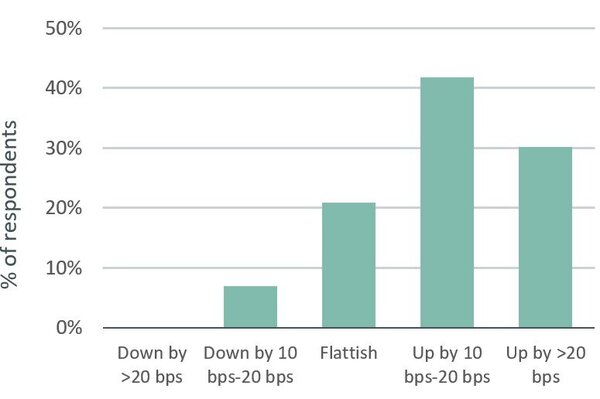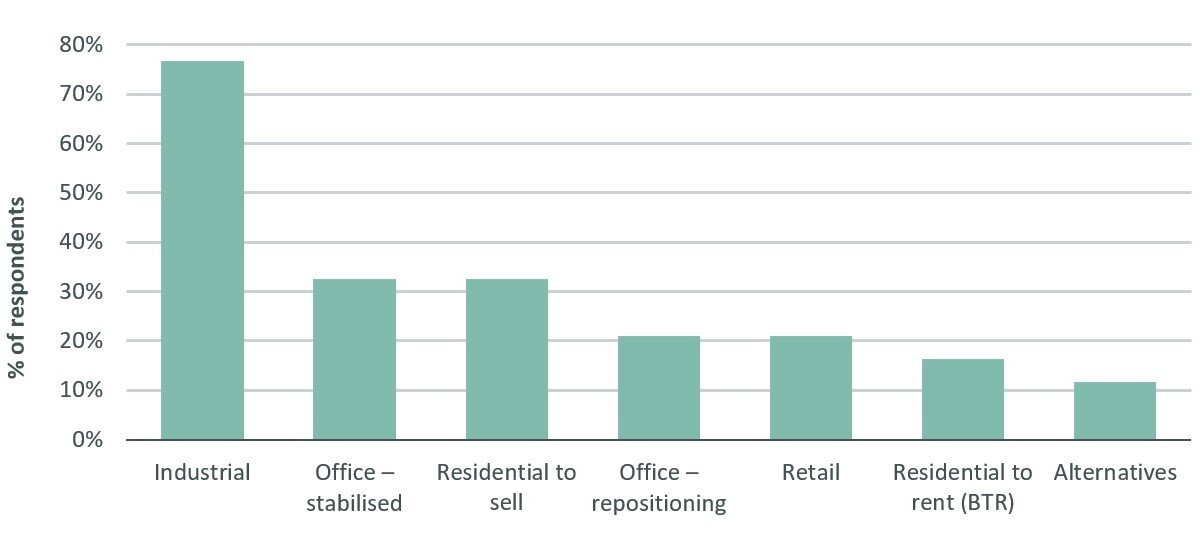Commercial Real Estate News

Australian Lenders Seek Real Estate Exposure Through Flight to Quality Assets in 2022
Commercial News » Sydney Edition | By Michael Gerrity | November 10, 2022 8:05 AM ET
According to a new CBRE survey, economic headwinds in 2022 have failed to dampen lender interest in Australian real estate, with industrial assets garnering the most attention.
CBRE Research tapped a mix of 43 local and international banks and non-bank lenders for its Q4 2022 Lender Sentiment Survey, with 44% expressing a desire to grow their commercial loan books.
CBRE's Managing Director of Debt & Structured Finance Andrew McCasker noted that this was slightly up on the Q3 result and was led by non-bank lenders, with higher interest rates generating higher returns, making the Australian market more appealing.
Industrial remains the sector of choice overall, with nearly three-quarters of the survey respondents expressing a preference for that asset class.
Preferred asset class for new investment
"Domestic banks are also favouring stabilised office and retail assets, which affirms a flight to quality for credit amid macro uncertainty," Mr McCasker said.
"Non-bank lenders are meanwhile keen to grow their exposure to build-to-sell projects and office re-positioning opportunities, which is reflective of the higher returns available when lending against riskier assets. These lenders have also raised significant credit, suggesting that they are waiting on the side lines for distressed opportunities."
The higher non-bank appetite for risk is also being reflected in pre-lease requirements for new development projects, with non-banks more likely to opt for a pre-lease rate of below 40%, while domestic banks are favouring projects that are over 60% pre-committed.
The survey shows that just 7% of respondents are looking to decrease the size of their loan books, with 49% expecting to remain at around current levels and 44% looking to increase.
Will Edwards, CBRE Associate Director, Debt & Structured Finance, noted that domestic banks were anticipated to hold, if not grow, market share given their strong balance sheets and lower exposure to wholesale markets.
Conversely, there were some early signs of liquidity issues from international banks, which might hinder their ability to grow their books, Mr Edwards said.
The survey highlights that rate expectations have increased since Q3, with over 40% of lenders expecting margins to increase by 10-20bps and a further 30% expecting a more than 20bps rise.
"While there are ongoing issues around loan serviceability, we have noticed a slight wind back in hedging requirements, suggesting lenders have comfort that the interest rate cycle is approaching a peak," Mr Edwards said.
In the next three months, credit margins on new loans are likely to move:

Sign Up Free | The WPJ Weekly Newsletter
Relevant real estate news.
Actionable market intelligence.
Right to your inbox every week.
Real Estate Listings Showcase
Related News Stories
Commercial Real Estate Headlines
- U.S. Commercial Mortgage Delinquencies Rise in Q2, CMBS Loans Lead the Surge
- Tokenization-Focused Real Estate Investment Bank Announced
- Commercial Cap Rates Edge Lower in U.S., Hinting at Market Turn
- WPV Targets New $6 Trillion Digital Real Estate Tokenization Opportunity
- $1 Trillion in Data Center Development Underway Through 2030
- WORLD PROPERTY VENTURES: The 'Anti-VC' of Real Estate Plans Major Capital Raise
- Multifamily Sector Enjoys Record Absorption in U.S. as Supply Slows, Vacancies Drop
- Employee Back-to-Office Attendance Surges in U.S.
- Phnom Penh Commercial Property Sectors Face Crosswinds in 2025
- World Property Bank Announced to Capitalize on Coming Trillion-Dollar Tokenization Boom
- REAL ESTATE PREDICTIONS: Decentralized Events Contract Exchange in Development
- U.S. Architecture Billings Improve Slightly in May
- Tokyo Office Demand Spills into Non-Core Wards in 2025
- AI Hyperscalers Drive Record Data Center Leasing in Early 2025
- Commercial, Multifamily Mortgage Debt in U.S. Hits Record $4.81 Trillion in Early 2025
- U.S. Multifamily Market Rebounds in Early 2025
- U.S. Office Market Experiences Historic Conversion Shift
- New York City Enters New Era of Office-to-Residential Conversions
- World Property Ventures Plans New Capital Raise
- U.S. Commercial Real Estate Lending Rebounds Sharply in Early 2025
- U.S. Multifamily Housing Confidence Declines in Early 2025
- Asia Pacific Commercial Investment Holds Steady in Early 2025
- Carnival Plans New Miami Headquarters Spanning Over 600,000 Square Feet
- Hong Kong Property Investors Take a Wait-and-See Approach Due to U.S. Tariffs
- U.S. Multifamily Buyer and Seller Sentiment Improves in Early 2025
- One Trillion Dollars of America's Commercial Property Loans Mature in 2025
- U.S. West Coast Dominates Self Storage Demand
- Phoenix, Orange County and Inland Empire Emerge as Leading U.S. Industrial Markets
- U.S. Mega Distribution Centers Leasing Activity Grew in 2024
- U.S. Commercial Borrowing to Increase to $583 Billion in 2025, Up 16 Percent Annually
- Demand for U.S. Life Sciences Space Spikes 28 Percent Annually in Late 2024
- Multifamily Property Sector in America Rebounding
- Asia Pacific Commercial Property Investment Spikes 23 Percent in 2024
- U.S. Commercial Property Market Primed for Growth in 2025
- Architecture Industry Sees Mixed Signals as 2025 Approaches
- Global Data Center Demand Spikes in 2025
- 2025 Prediction: U.S. Commercial Investment Recovery Expected to Gain Traction
- Holiday Retail Sales for 2024 to Hit Record $1 Trillion
- Tech, AI Industries Drive Largest Share of Office Leasing Activity in U.S.
- Commercial Real Estate Lending in U.S. Enjoys Strong Growth in Q3








